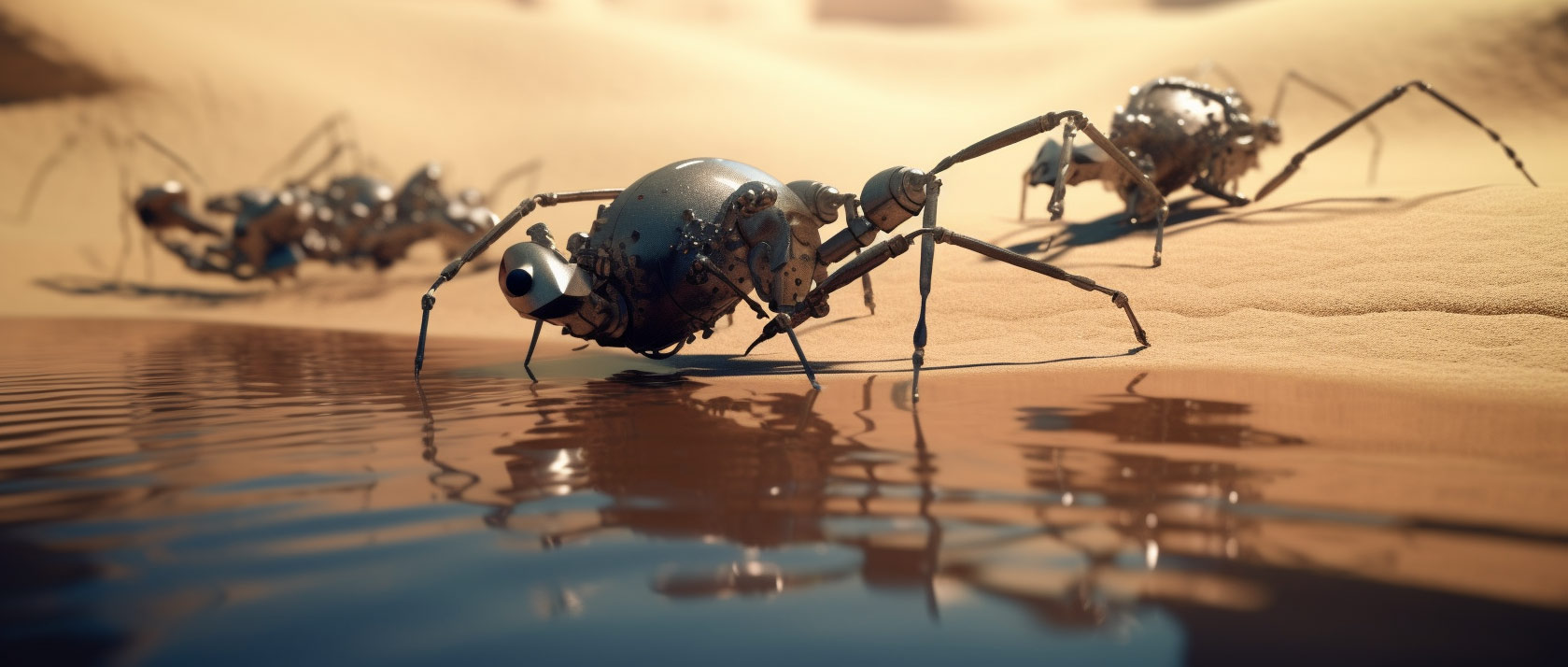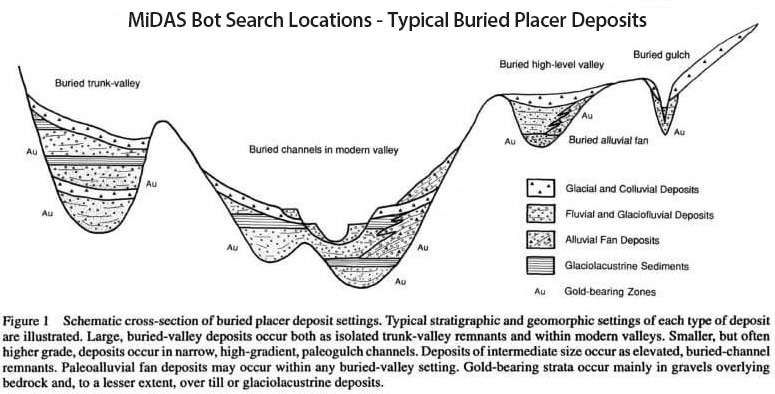
Think Gold Mining is Difficult, Dangerous and Harmful to the Environment? Think Again.
 Bullion.Directory Market News 1 April, 2023
Bullion.Directory Market News 1 April, 2023
By Alison Macdonald
Commercial Editor at Bullion.Directory
 International gold mining legend Corey Keller has announced what he describes as being a global solution to some of the biggest problems inherent in gold mining – and his solution is little bigger than an ant!
International gold mining legend Corey Keller has announced what he describes as being a global solution to some of the biggest problems inherent in gold mining – and his solution is little bigger than an ant!What began as a lock-down project soon attracted industry interest and Canadian Keller realized he was onto something potentially ground-breaking. Working with a team of British and American robotics experts from MIT and Oxford University, the consortium has developed a microscopic robot, or micro-bot, designed to make light work of the discovery and extraction of gold in often inhospitable and dangerous environments – and with zero harm to the environment.
Named Project MiDAS (short for Micro Distributed Alluvial Seekers), each bot in the program is approximately 15mm in length and work in ‘hives’ of up to 1000 bots, controlled by an AI able to take input from their individual sensors and build a detailed model of the surrounding environment.
The hive targets areas rich in gold, then by concentrating and coordinating through it’s connected ‘mind’, the army of drones can quickly locate and remove all precious metals found – one small pair of jaws at a time.

Initially the micro-miners were tested in Canadian rivers rich in gold deposits, where they would dive into gold-bearing alluvial sand and gravels to seek out placer gold. Each bot is able to climb between grains of sand and small rocks, their sensors locating the gold and their strong legs and jaws creating a path to the metal.
Project leader Dr Joe Nisanşakası from Cambridge University in the UK describes the process and it’s advantages:
We would dispatch the hive on the river bank at a location we thought looked suitable and within as little as 10 minutes bots would begin returning holding tiny golden flecks. With the prototype bots only having a limited battery life we would have them return to base after 20 minutes and in this short amount of time the hive could extract as much as 50g of precious metals. Needless to say we were excited!
Gold-panning is slow and back-breaking work while larger-scale alluvial placer mining can be incredibly destructive to the environment. Where these MiDAS bots excel is they are in and out in minutes and leave no trace behind, it’s a no-dig solution from miners who never get tired.
Professor Gefälscht Aprilscherz, head of research on the MIT robotics Team said “The technology is still under development, so we obviously have some limitations in terms of mining duration and mandible strength but with each generation of MiDAS bot we see huge advances in power, longevity and overall ability.”
She continued, “With our next-gen MiDAS bots these hives will soon be able to work for 1-2 hours at a time, their increased size and strength allowing them to burrow through tougher substrates and work together to move larger obstacles in their hunt for gold.”
“Some day we expect the bots will be able to dig into sandy and clay soils,” Aprilscherz continued, “and we see their ultimate implementation as an ethical solution to the health and social problems currently rife in artisanal mining.”
In the past month Project MiDAS has secured additional funding from US-based Boston Dynamics and DARPA, meaning that development of these larger more powerful bots could see prototypes begin deploying within the gold mining industry and beyond in as little as 12-18 months.
Early Teething Problems
The hugely successful project has not been without it’s problems.
Project MiDAS’ trans-Atlantic cooperation was sorely tested in a ‘Tea-party’ moment when the first hive let loose in the wild was lost and never recovered. The result of a miscommunication between the British and American teams, the software running the hive had been programmed in imperial units of measurement while the GPS software used the metric system, leading to the hive suffering a total failure.

Dr Joe Nisanşakası – Project Leader (Cambridge) Working on MiDAS Bots
Project leader Dr Nisanşakası was quick to point out “We’ve since re-programmed the AI to avoid any gold in close proximity to organic tissue. Once bitten, twice shy as they say!”
He added “Joking apart, with sweeping mechanical improvements and rapid development of the AI thanks to DARPA’s involvement, it’s unlikely that anything else could possibly go wrong.”
From Gordon to Keith – The Hive-Controlling AI
The bots may be the thousand faces of MiDAS, but the soul lies in the AI guiding the hive.
“We name each iteration of the AI – each developmental leap – after beloved figures in the gold industry.
It’s amazing how far we’ve come even since Mike (Mike Maloney) our first big success,” Dr Aprilscherz explained, “Peter (Schiff) experienced some bank issues on exiting the river but overcame them by problem solving as a team for the first time. With Ron (Paul) the AI developed a degree of autonomy, breaking away from some of the governing rules we’d set. They each have a unique personality, it’s quite fascinating.
The current AI, Keith (Weiner) is undergoing testing in California, and has become so good at analyzing the river for gold deposits that the hive won’t even emerge from it’s carry case unless it determines there is in fact gold present – based on Keith’s technical analysis of patterns in the water surface.
What about the AI where the hive saw a complete loss? That would be Gordon Brown.
Where Next for MiDAS?
The MiDAS team say that testing will continue for the foreseeable future, but they have already received a number of inquiries for commercial contracts with several major gold mining companies.
Because of “Keith’s” incredible predictive accuracy, miners will be able to rapidly determine if an area contains meaningful gold deposits or not, without the need to spend millions test-mining land that could end up being worthless.
Nisanşakası emphasized “Sometimes knowing for certain whether or not gold is in a vicinity can make or break a project, a business or an institution. I think that’s why we’re banned from COMEX.”
For full details of Project MiDAS, Maple House TV has just released a 60 minute documentary on YouTube and the Discovery Channel.











 Material provided on the Bullion.Directory website is strictly for informational purposes only. The content is developed from sources believed to be providing accurate information. No information on this website is intended as investment, tax or legal advice and must not be relied upon as such. Please consult legal or tax professionals for specific information regarding your individual situation. Precious metals carry risk and investors requiring advice should always consult a properly qualified advisor. Bullion.Directory, it's staff or affiliates do not accept any liability for loss, damages, or loss of profit resulting from readers investment decisions.
Material provided on the Bullion.Directory website is strictly for informational purposes only. The content is developed from sources believed to be providing accurate information. No information on this website is intended as investment, tax or legal advice and must not be relied upon as such. Please consult legal or tax professionals for specific information regarding your individual situation. Precious metals carry risk and investors requiring advice should always consult a properly qualified advisor. Bullion.Directory, it's staff or affiliates do not accept any liability for loss, damages, or loss of profit resulting from readers investment decisions.

Next time give me a heads-up Alison.
LOL @ Peter Schiff’s bank issues
Interesting concept.